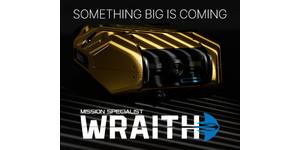Joint Industry Project Focused on Arctic is Underway in St. John's
A Joint Industry Project (JIP) launched by INTECSEA aims to advance the application of existing and emerging subsea technologies in strategically important offshore oil and gas developments in remote and hostile environments—particularly in offshore arctic and cold-climate regions. The JIP is led out of INTECSEA’s St. John’s, Newfoundland, Canada office. Petroleum Research Atlantic Canada (PRAC) administers the contractual entity.
INTECSEA kicked off the JIP in December 2010 in St. John’s. Completion is scheduled for year-end 2011. JIP participants include three oil companies participating in arctic developments offshore Eastern Canada.
“The prize is enhanced confidence in deeper waters and ice-prone regions worldwide while improving the availability of valuable hydrocarbons,” said Uri Nooteboom, president of INTECSEA, a leading engineering and project delivery company serving the offshore oil and gas industry. With 17 offices across five continents, INTECSEA, a WorleyParsons Group company, delivers solutions for floating systems, marine pipelines and risers, subsea and control systems and offshore technologies including flow assurance and materials engineering. Noteboom added that frontier developments in cold climates—where ice floes and icebergs are prominent much of the year—and remote offshore arctic areas require robust subsea systems that effectively manage the extraction of produced fluids and transportation to the end user.
Frontier and deep water prospects offshore Eastern Canada which would benefit from the JIP research include Orphan Basin, Laurenian Basin, Central Ridge/Flemish Pass and the Labrador Shelf, said Mike Paulin, INTECSEA Operations Director for Canada. “The Labrador Shelf is a very harsh environment and will require innovative solutions to overcome the challenges,” he said.
The Labrador Shelf includes water depths up to 9,900 feet and experiences waves up to 43 feet high. Ice conditions on the Labrador Shelf are significant, with pack ice reaching a thickness up to 23 feet and icebergs a serious threat from July through October.
To address these and other frontier issues, the JIP will generate a database with a user-interface tool that allows operators and developers to screen and select from a broad array of active production technologies, including separation, boosting, compression and direct electric heating systems, suitable for stranded and existing field developments. Inherent evaluations include system installability, operability, reliability and maintainability issues specific to the environment, as well as technology maturity and any additional fit-for-purpose qualification programs.
Efforts of the JIP will redefine current industry limits for field development architecture in cold-climate regions while improving expectations for robust systems that are flexible and responsive. The application of active subsea production technologies may deliver new strides in field development in the following areas:
- Extend present arctic oil tie-back limits of below 10 kilometers or six miles to a goal of around 50 kilometers or 30 miles, and
- Tie-back subsea wells in potentially 10,000 feet of arctic water to a floating production facility in shallower, more protected waters.
The JIP is also tackling prominent offshore arctic issues, including the impact of iceberg scouring on subsea facilities, said Paulin. “A floater can be relocated but subsea facilities cannot,” he added. Arctic operators, particularly offshore Eastern Canada, dig huge holes—60 feet deep and up to 1,080 feet long—or the length of three football fields—to avoid ice scouring, explained Paulin. “This approach is costly, time-intensive and will not sustain the level of subsea development the industry anticipates,” Paulin said.








 December 2025
December 2025



